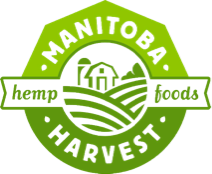
Happy National Hemp Day! Here at Manitoba Harvest, we’re celebrating hemp’s special day by appreciating all the ways this plant has served humanity since the dawn of civilization — and anticipating the ways it will help us solve a whole slew of modern challenges.
Powering our success
As one of the earliest crops cultivated by humanity, hemp has long supported us agriculturally, economically, medically, and nutritionally.
Here are a few of history’s greatest hemp-related hits:
People began cultivating hemp (in addition to wheat and barley) in ancient Mesopotamia around 8,000 BC, when the post-glacial sea level rise was slowing. Between 4,000 and 6,000 BC, hemp seeds and oil were widely consumed throughout China, while hemp fibers were used in textiles.
By 1,200 BC, hemp had reached Europe, and from there it spread across the ancient world. In the 1st century AD, the medicinal properties of the cannabis plant were noted in early medical texts. Several hundred years later, Italian ships began using hemp ropes. When Christopher Columbus sailed to North America in 1492, his ships were hung with hemp sails and rigging.
In the 17th century, British colonies in North America were required to grow hemp to send back to England. By 1775, the colonies were selling hemp textiles directly to France and using the proceeds to buy weapons for the Revolutionary War. In 1776, Thomas Jefferson drafted the Declaration of Independence on hemp paper.
In the 19th century, cannabis plantations flourished in Mississippi, Georgia, Nebraska, South Carolina, Kentucky and New York. In 1938, Popular Mechanics dubbed hemp the “billion dollar crop,” estimating that it could be made into more than 25,000 different products. During World War II, the United States Army urged farmers to grow hemp to support the war effort.
Things took a turn in 1970, when the Controlled Substances Act classified hemp as an illegal Schedule I drug, imposing strict regulations on its cultivation. But in 2014, President Obama signed a farm bill permitting U.S. research institutions to begin piloting hemp farming for research purposes. In 2018, President Trump signed a bill once again legalizing hemp production across the United States.
By 2020, the U.S. hemp industry was valued at more than $4 billion annually, with projections it will reach more than $15 billion by 2025. Research is booming into how CBD and other cannabinoids found in the hemp plant can support human health and wellbeing. And hemp’s popularity is booming among farmers thanks to its versatility, economic potential, and important role in regenerative agricultural practices, which have taken on a new urgency in the face of climate change.
“Why use up the forests which were centuries in the making and the mines which required ages to lay down, if we can get the equivalent of forest and mineral products in the annual growth of the hemp fields?” — Henry Ford
Enhancing our health
Hemp: We write on it. We make clothing and textiles from it. We build buildings with it. We eat it. We make medicine from it. We restore soil health with it.
We cultivate it, and it cultivates us.
It’s hard to think of another plant that serves us in so many diverse ways. Not only does hemp provide us with the raw materials for civilization, from textiles to construction materials to biofuels, it’s also uncannily suited to nourishing us from the inside out.

Hemp seeds contain all nine essential amino acids that our bodies need to function — something no other single plant food can claim — plus fatty acids in the precise ratio of omega-3s and omega-6s that’s optimal for human health. It’s also got fiber, minerals, and vitamins that catapult it straight into the realm of a superfood, seemingly designed for the precise purpose of supporting our nutritional wellbeing.
“As a physician, I recommend nutritious hemp seeds and oil to anyone interested in maintaining a healthy diet.” — Andrew Weil, MD
Regenerating and healing our soil
As a crop, hemp is amazingly versatile and resilient. It’s naturally resistant to pests and disease, so it doesn’t require chemicals and herbicides to grow. It lends itself nicely to organic production, and can help provide havens for endangered pollinators.
Its deep roots help to build and protect soil, and when its fibrous stalk is chopped up and returned to the earth, microbes break it down and sequester its carbon back into the soil. Industrial hemp sequesters more carbon per acre than trees or other commercial crops. And because it grows so quickly — up to 13 feet in 100 days — it offers one of the most efficient tools available for converting CO2 to biomass.
While it’s true that hemp can be grown in poor soil, it thrives with proper nutrition. Hemp benefits from advance planning and thoughtful land management, which is why at Manitoba Harvest our team of agronomists starts working with farmers well in advance of the first hemp seed being placed in the ground, in order to set them up for success.

We also promote proper crop rotation, which is an important tool for sustainability. We work with our farmers to ensure they’re growing a diverse mixture of crops year after year in a way that will keep their land well-drained and nutrient-rich for years to come. Growing hemp helps support our farmers economically and ecologically.
Hemp has helped humans become wildly successful as a species, and now it can help us restore some much-needed balance, both individually and environmentally, in a stressed-out world.
Happy National Hemp Day to this transformative plant. Here’s looking at you.
“Hemp is not something we should take for granted, and if we treat this plant with respect, this plant will help us change our world.” — Winona LaDuke



